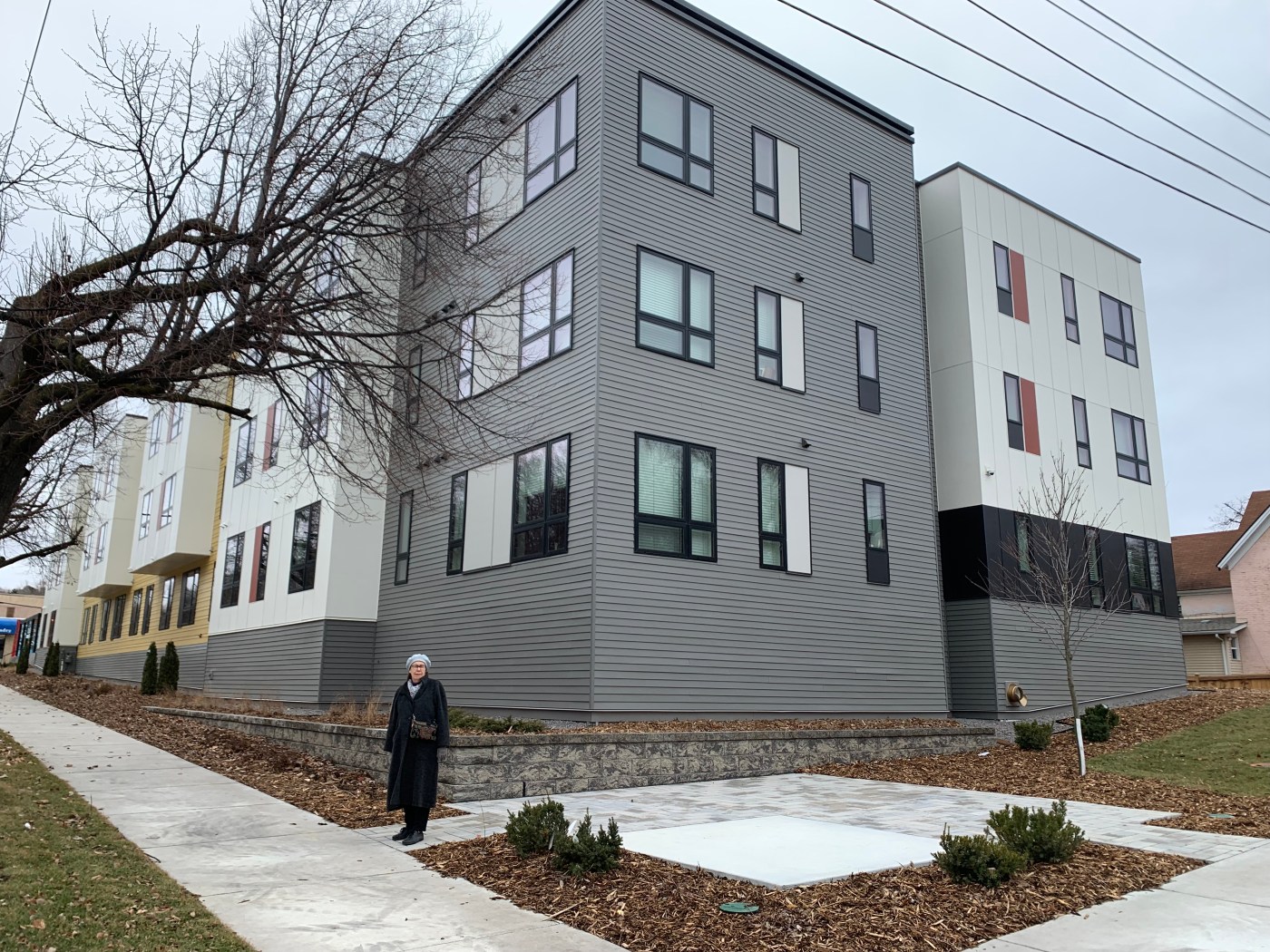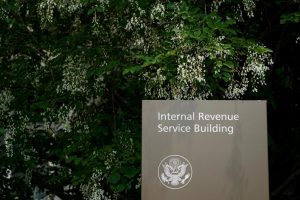
Four buildings boosted by Ramsey County bring 568 affordable senior housing units online
Boosted by federal pandemic aid from the American Rescue Plan Act of 2021, Ramsey County’s Housing and Redevelopment Authority distributed key funds to four affordable senior housing projects about two years ago, with the hope of topping off a complicated layer-cake of public and private dollars to finally get the developments completed amid rising construction costs.
It worked.
The four buildings have all just opened around roughly the same time, adding to the market more than 560 affordable senior housing units run by private or nonprofit development agencies in Roseville, Lauderdale, Mounds View and the West Side of St. Paul.
“It was just a rare opportunity that we were able to put all of these federal resources from the Biden administration (in play at once),” said Max Holdhusen, deputy director of Housing Development for Ramsey County. “I don’t think we’ll see that many senior buildings coming online at the same time again.”
Projects aimed at those with less than 30% of median income
While the housing is targeted to a range of income limits, the county in recent years has been prioritizing projects that offer multiple units aimed at residents earning no more than 30% of area median income, or less than $14,000 for a person living alone.
At the same time, Ramsey County has developed a streamlined application process, allowing developers to fill out one request that county staff will then score and attempt to match to the appropriate funding source. While American Rescue Plan funding provided the county with one-time federal relief, other county-related housing funding sources have included the county’s allocation from the federal HOME Investment Partnerships Program and the county’s Environmental Response Fund, known as ERF.
With a $341,000 assist from Ramsey County HOME and $214,000 in ERF dollars, Dominium recently opened an age 55-plus development community, the Harbor at Twin Lakes in Roseville, which spans 277 affordable units.
Real Estate Equities developed the Fern in Lauderdale, which spans 114 units, with a $2.95 million boost from the county’s ARPA funds. The Neighborhood Development Alliance recently opened Stryker Senior Housing in St. Paul, which spans 57 units, with $750,000 from the county’s ARPA allotment. MWF Properties developed the Villas of Mounds View, which span 120 units, with $1.55 million from the county’s ARPA dollars.
“In 2020, we estimated that Ramsey County alone needed 15,000 units at 30% AMI,” said Holdhusen, noting communities of color are especially impacted by housing costs. “We have really been trying to chip away at that. That looks at both people who are cost-burdened right now, paying more than 30% of their rent, and the projected growth in our population.”
Stryker Senior Housing
Alarmed by the growing number of single women around her entering retirement with no savings, Karen Reid set out to build deeply affordable senior housing on St. Paul’s West Side. The vacant Stryker Avenue lot was one she’d been eyeing since 1998.
Karen Reid, outgoing executive director of the Neighborhood Development Alliance, at the new Stryker Senior Housing in St. Paul on Thursday, Feb. 8, 2024. (Frederick Melo / Pioneer Press)
Reid, who retires this year after 24 years as executive director of the St. Paul-based nonprofit Neighborhood Development Alliance, set out to acquire the empty land from the city of St. Paul for a half-block length development. Then, with the city’s help, an opportunity arose to expand the project by obtaining — after some five years of off-and-on inquiry — the vacant commercial building next door, which had gone into foreclosure.
The goal was to install a block-length senior housing development aimed primarily at seniors age 55 and up earning no more than 30% of area median income, or less than $13,400 annually.
“We’re getting older here at NEDA,” said Reid on Wednesday. “We’re seeing elderly women who only live on Social Security and can’t afford anything. If they don’t have families or can’t live with their families, and they had entry-level jobs, their Social Security benefits are pretty low. We’ve seen veterans who lived in basements.”
Fundraising
Fundraising for the $13 million project went down to the wire, roping in state, federal, city and county sources, as well as an environmental cleanup grant from the Metropolitan Council, the metro’s regional planning agency. State housing infrastructure bonds provided $9.45 million. The St. Paul Housing and Redevelopment Authority supplied another $1.5 million from its allocation of federal HOME funds.
Then, with about six months to go before closing on bank financing, Reid realized inflationary costs and supply-chain slowdowns could require additional contingency funds. Some of the soil was substandard and had to be replaced.
“The ups and downs of scheduling, and materials and labor was crazy,” Reid recalled. “Vendors couldn’t hold costs on materials for more than a week sometimes.”
She applied to Ramsey County’s HRA and received $750,000 in ARPA (American Rescue Plan Act) funding within a matter of months. “It was March, and I thought, ‘we better apply.’ … It made all the difference in the world,” she said. “We built in extra contingency because we knew about fluctuating costs.”
Stryker Senior Housing opened at 617 Stryker Ave. in October with 57 efficiency and one-bedroom units, with about three-fourths of the units targeted to residents earning no more than 30% area median income. The income limit on the remaining units is 50% AMI.
Of the units, 15 are backed by federal project-based Section 8 housing vouchers, and another five units are targeted to homeless veterans through the U.S. Department of Housing and Urban Development-Veterans Affairs Supportive Housing program, known as HUD-VASH.
There’s still plenty of room for new residents.
“We’re only about a third full. It’s a slow lease up,” Reid said. “It’s moving faster now. Our goal was to try to reach the people with the lowest income, if possible.”
Other HRA funding
While the one-time ARPA funds are almost depleted, Ramsey County has used a dedicated taxpayer levy since 2022 to raise roughly $11 million annually toward a range of housing initiatives. Among them, they’ve backed some 1,879 affordable housing units, including 1,118 units that already existed but needed preservation dollars for maintenance or to keep them affordable.
“I would say the majority of that is enhancing and maintaining multiple public housing towers,” Holdhusen said. “We’re really benefiting a lot of units here.”
The Ramsey County HRA posts information about its funding sources for housing initiatives at RamseyCounty.us/housinginvestments. Developers are encouraged to apply.
“Our 2024 housing solicitation just opened on Friday,” said Holdhusen last week. “We’re ready and open.”
Related Articles
‘Everyone loves Herb’: World War II vet, retired deputy stays active as he turns 100
Falcon Heights advances exploration of return to St. Anthony policing contract
‘JuVaughn’s life will never be the same,’ judge tells St. Paul rec center shooter before sentencing him to prison
Did St. Paul woman take her own life or was she killed? Murder trial underway.
Detroit-style, Sicilian, Roman: Thick-crust pizza is here to stay. Here’s where to find it.


